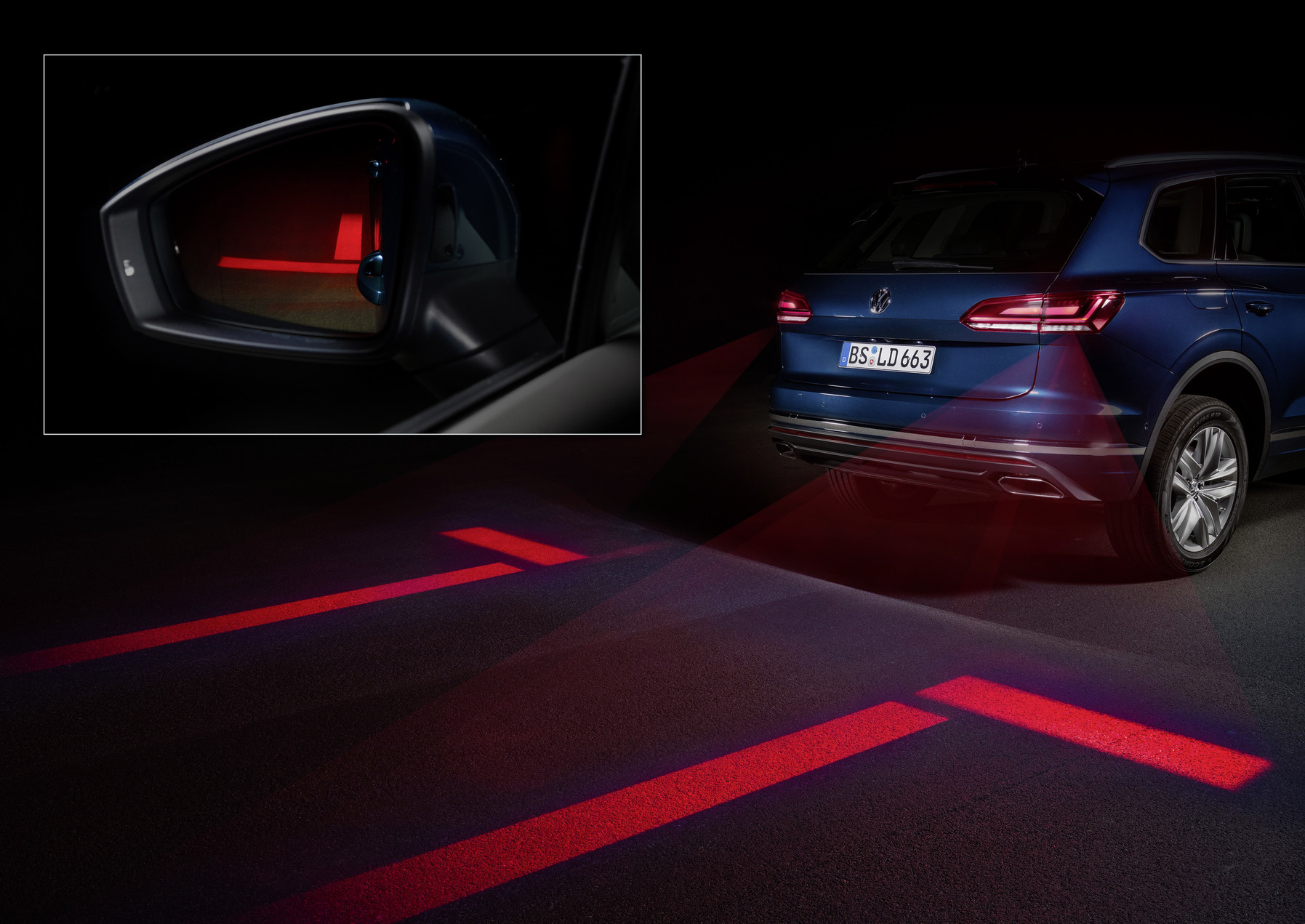
Exterior lighting becomes communication factor
Volkswagen designers are using new technical options in the development of lighting. The primary aim here is to further develop the lighting functions of today’s cars and thus optimise road safety in present. In addition, lighting designers and engineers are looking to the future. Because tomorrow’s autonomously driving cars will confront road users with new situations in everyday life – such as the lack of eye contact with the driver.
This is where new, interacting lighting functions come into play. According to Volkswagen engineers, the new lighting systems will include micro-pixel HD headlamps with up to 30,000 light points and high-performance LED headlamps as an alternative to laser light. The micro-pixel HD headlamps will project information directly onto the road for the first time, thus further improving safety.
New assistance systems such as “Optical Lane Assist” can also be implemented in this way. In this system, the headlights project lanes in front of the vehicle, giving the driver precise information about the width of the car (including a trailer) and the distance to the lane boundaries, for example at construction sites. The lanes also follow the radii of curves. Such lighting functions are tested with the HD-LCD headlamps.

innovative headlight and taillight technologies, can
help drivers to better find his way.
The innovation is also making its way into the rear lights, for example in the form of the MatrixBBR lights. With the aid of this technology, warning notices are to be integrated into the rear lights, for example, in order to defuse dangerous situations such as the end of a traffic jam via car-to-car communication. New assistance functions such as the “Optical Park Assist”, which works with microlenses, make maneuvering safer. With this system, the shunting path is projected onto the carriageway to alert pedestrians to parking.
Further possibilities for communication via tail light from Volkswagen’s development laboratories are the use of the LED arrays of the tail lights as a kind of graphic display. Possible use cases: display of the battery charge status, warnings or a personalized taillight signature, composed via a smartphone app.

to fellow drivers. Personalized light signatures can be programmed
through a smartphone app.
In order to test new technologies reproducibly, Volkswagen has opened a lighting competence centre at its Wolfsburg plant. A 100 meter long, 15 meter wide and five meter high light tunnel is in operation there. The lighting systems of tomorrow will be tested in this tunnel on a virtual road. Thus, the tests can be reproducibly repeated. Systems can be compared and evaluated in the light tunnel better than ever before. The light perception of car drivers and pedestrians can also be ideally examined in the centre. The light tunnel shortens the development time for new headlamp, rear and interior lighting systems, since the number of time-consuming night-time journeys can be reduced. Progress in light development can thus be translated even more quickly into new series technologies – a plus in safety from which all road users benefit.
Related articles:
High resolution lighting comes to automotive headlamps
BMW relies on biologically effective light for the Le Mans racing classic
Hella and Volkswagen partners on LED matrix Headlamps
 If you enjoyed this article, you will like the following ones: don't miss them by subscribing to :
eeNews on Google News
If you enjoyed this article, you will like the following ones: don't miss them by subscribing to :
eeNews on Google News




